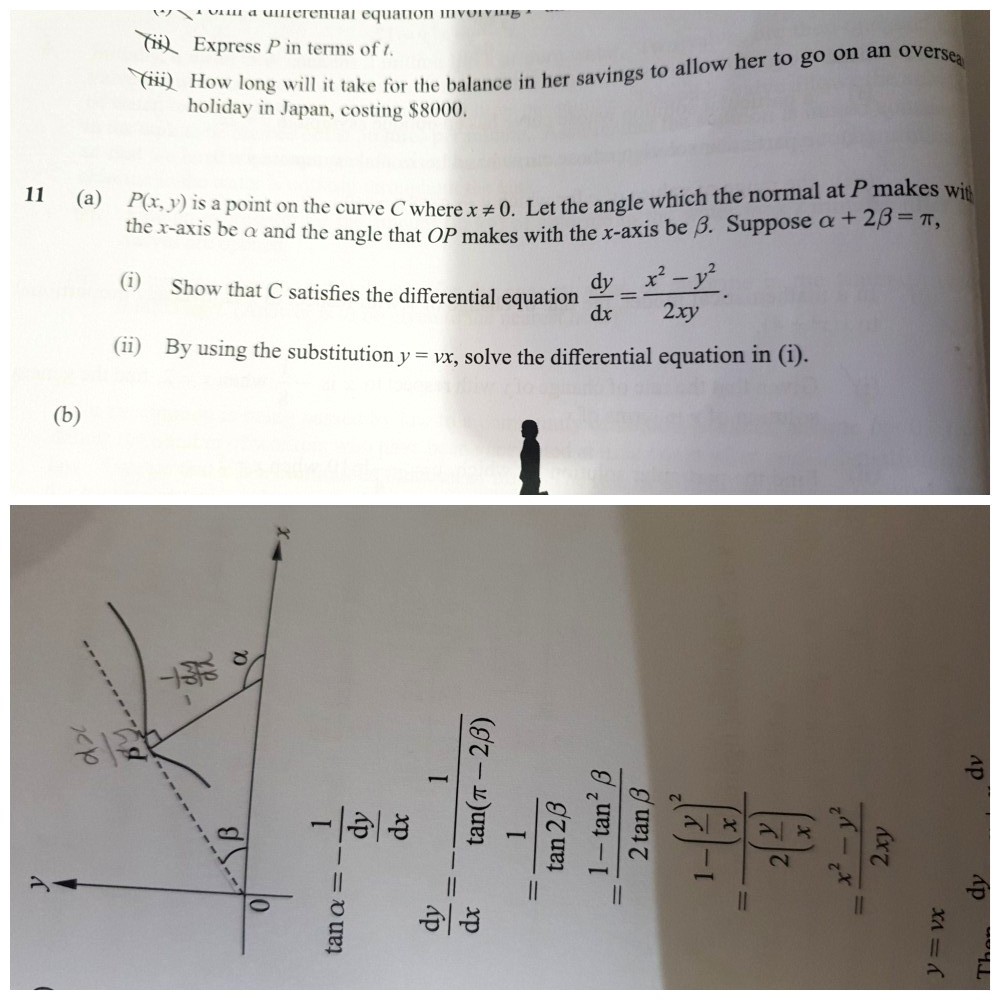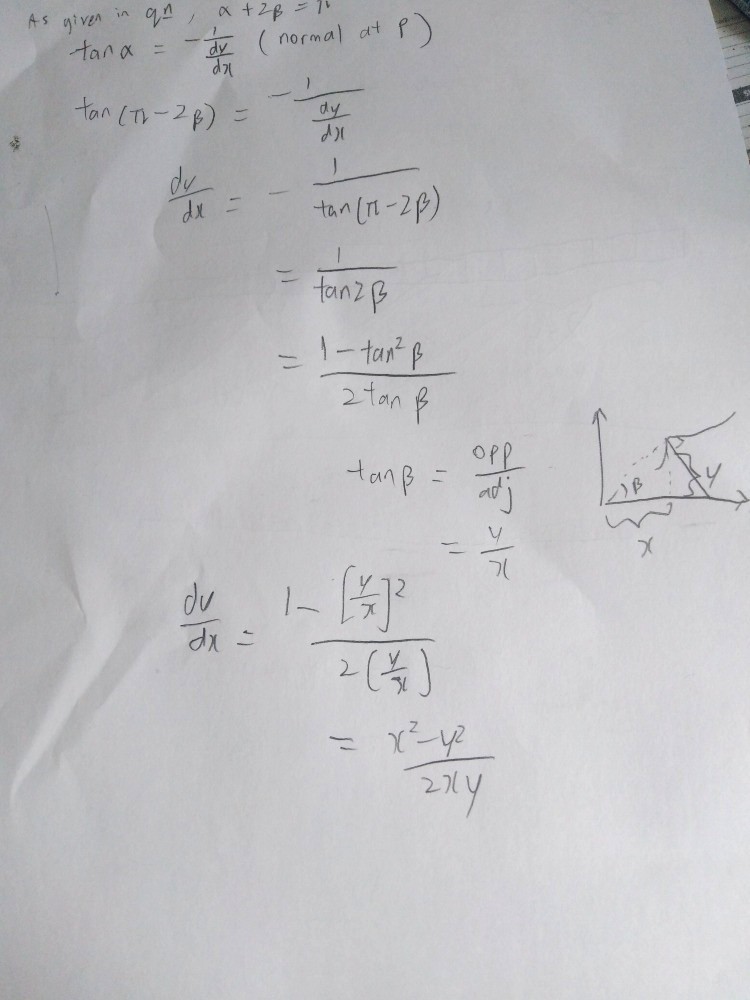Ask Singapore Homework?
Upload a photo of a Singapore homework and someone will email you the solution for free.

Question
junior college 2 | H2 Maths
One Answer Below
Anyone can contribute an answer, even non-tutors.

Not sure how the first step is derived. Pls help, thank you! Sorry for the orientation of the ans, only way i could show both qn and ans!
Then the perpendicular line has gradient -1/tangent since product of gradient of two perpendicular lines is -1.
OP isn't always going to be the same as the tangent to the point at P.
Rachel, you posted this yesterday and I gave 2 comments. Did you see them? If yes, was there any part you didn't understand?
x axis and perpendicular line from P to the axis.
The angle α is the angle of interest.
We can use trigo to find the gradient of the normal.
Let the foot of the perpendicular from P to the x-axis be J.
Let the point of intersection of the normal to P and the x axis be K.
Now the slope of the normal is just :
Vertical height of PJ ÷ JK
And this actually equals tan α since
tan α = opp/adj of △PJK (with α as the target angle) = PJ/PK
Since the normal and the tangent to P are perpendicular to each other, the product of their gradients is -1. And the gradient of tangent to P is just dy/dx at point P.
So tan α × dy/dx = -1
And therefore
tan α = -1/ dy/dx
In any of these cases, trigo can be used to find dy/dx.
The next part is just trigo manipulation using the property
tan(180° - θ) = - tan θ (degrees)
Or
tan(π - θ) = - tan θ (radians)
so since α + 2β = π,
then tan α = tan (π - 2β) = -tan(2β)
The trigo identity tan2θ = 2tanθ/(1 - tan²θ)
is applied.
This is done so that tanβ = y/x can be introduced to get to the desired
See 1 Answer






